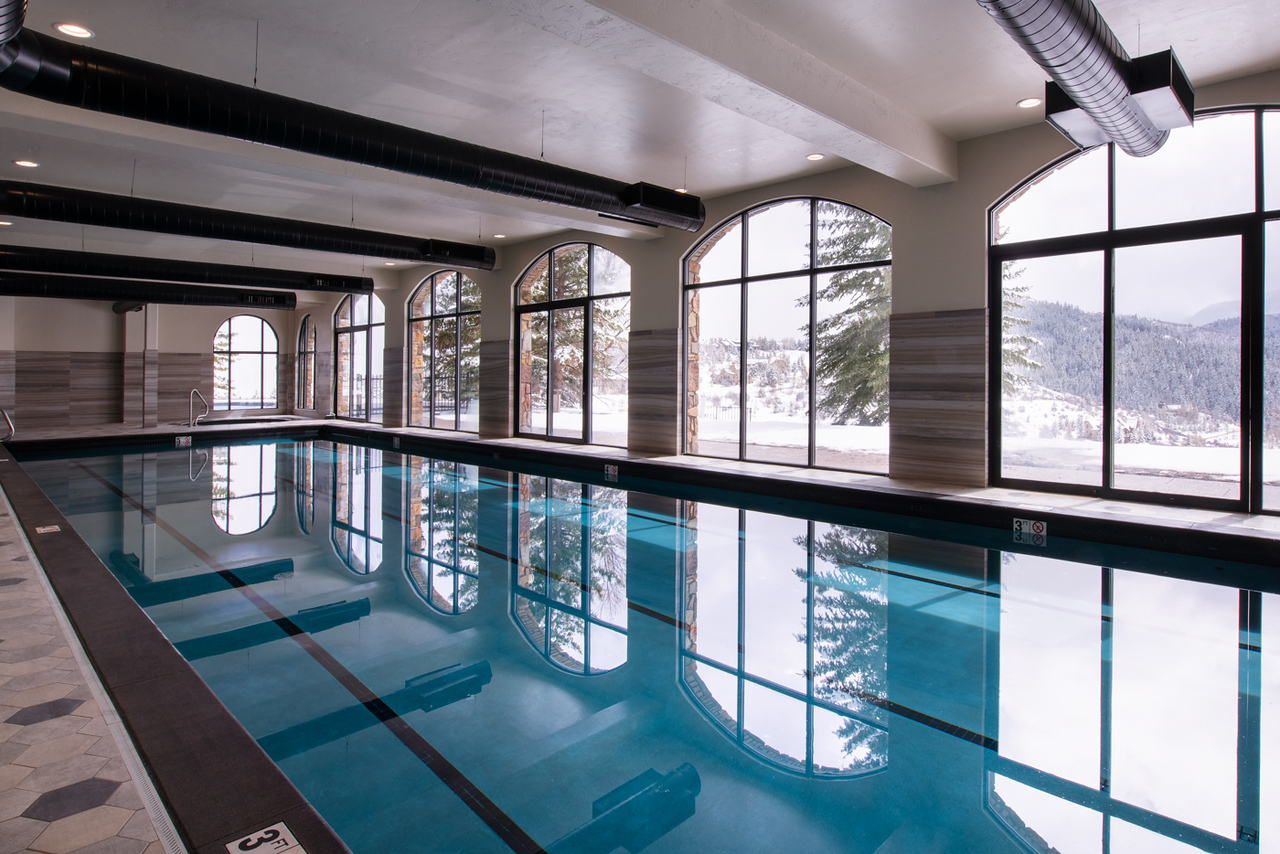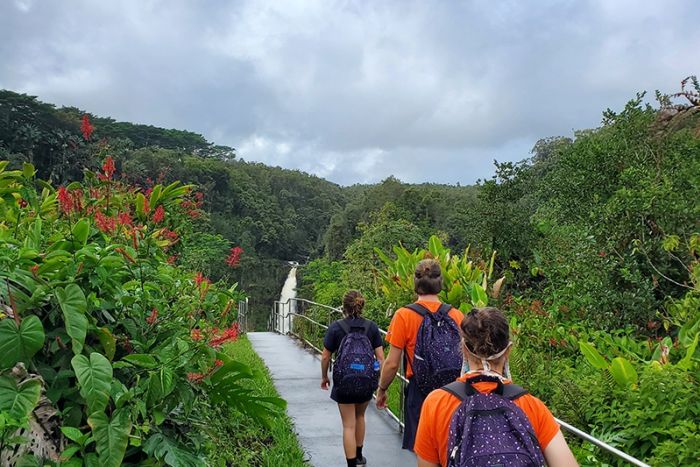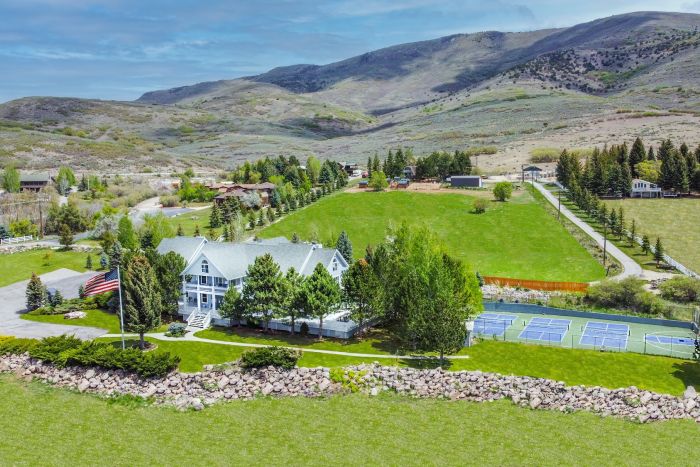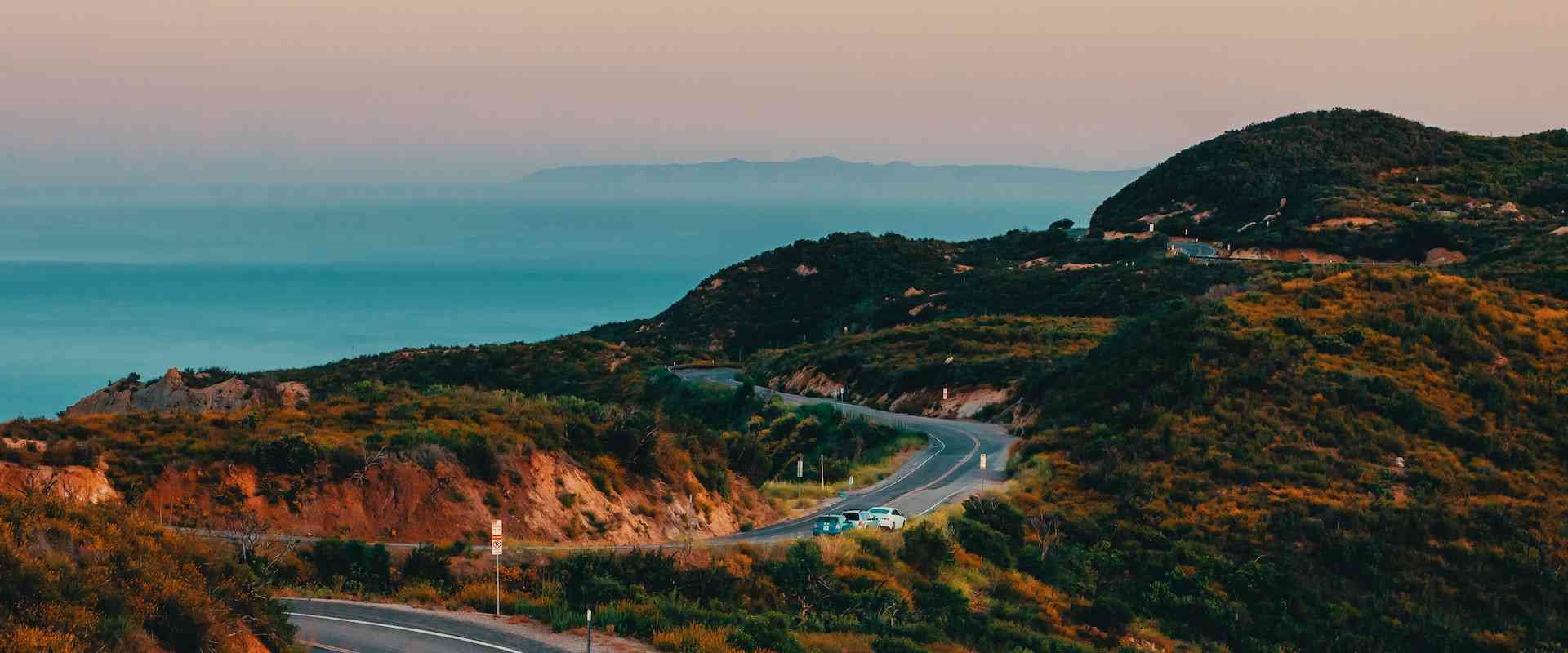Learn / Into the Wild: Adventure Therapy Explained
Into the Wild: Adventure Therapy Explained


September 19th, 2022| Clinically Reviewed by
It’s no secret that spending time in nature is healing. The outdoors can be a great place to turn when you’re recovering from mental health issues or addiction. Nature provides peace, challenges, and new experiences—all without judgment.
Adventure therapy takes that idea a step further. This type of therapy shepherds people into the outdoors and out of their comfort zones. During these outings, clients participate in structured activities designed to achieve specific goals.
Rehab isn’t just talk therapy and group meetings—many treatment centers use the power of adventure as part of their recovery process. Read on to learn more about how this works, and how it can help you.
Healing by Doing
Adventure therapy1 is a type of experiential therapy, or “learning by doing, with reflection.” In the experiential theory, it’s believed that learning is greater in unfamiliar situations. And this is exactly what adventure therapy does—in the outdoors.
All adventure therapy programs have several aspects in common:2
- The activities occur in a natural setting; usually one that’s unfamiliar to participants.
- Clients must complete challenging activities, often in cooperation with others.
- Tasks are typically completed in small groups, but can also occur 1-on-1.
- Experienced guides lead the group, providing physical and emotional safety.
Although most adventure therapy programs share a core ethos, every rehab is unique. Different centers may offer various activities, depending on their surroundings, weather conditions, and more.
What Activities Can You Do Treatment?
During adventure therapy, you can reflect on your feelings in a brand new context. But even when you’re deep in nature, you might have a busy schedule. These programs may offer some or all of the following activities:
- water activities, like kayaking or surfing
- land activities, such as hiking or biking
- climbing activities, including rock climbing or ropes courses
- snow sports, like snowboarding or snowshoeing
You may choose to try something new, or get reacquainted with an old hobby. But in either case, make sure to plan around the location of your rehab center. Not all places will be able to offer every activity. A facility in Kansas probably doesn’t have surfing, for example.
All Points North Lodge takes advantage of their location in the Rocky Mountains. “We have so many fantastic opportunities for activities outside of here, being in Colorado and being at the top of the mountain,” says Dr. Ryan Drzewiecki, Director of Clinical Operations. They take clients on almost any outdoor excursion you can think of—like canoeing, whitewater rafting, horseback riding, ATVing, and skiing.
But these recreation opportunities aren’t just for fun—they also serve a purpose. Dr. Drzewiecki continues, “we have so many different options there, which we marry with an experiential philosophy of therapy.” So, you’re having fun and healing, all at the same time. This is the heart of adventure therapy: to enjoy yourself while you experience personal growth.

Using Adventure to Reach Therapy Goals
Throughout the adventure therapy process,2 clients should feel like they’re in between their “comfort zone” and “panic zone.” Researchers in one study coined this desired “zone” the “groan zone.” In this mental state, people feel more attentive and open to new experiences.
There are several common goals that adventure therapy aims to accomplish1 while people are in the “groan zone:”
- increased self-awareness, which contributes to a better understanding of how their behavior affects outcomes
- higher accountability, both to themselves and to others
- healthier coping skills, which leads to better self-control
- more positive beliefs about themselves, and less negative ones
- better creative problem-solving, communication, and cooperation strategies
- realistic understanding of their own strengths, weaknesses, and self-imposed limitations, which leads to better decision making
Wilderness therapy is a specific type of adventure therapy with similar goals. Although they both take place outside, there are slight differences between the 2 therapies.
Is Wilderness Therapy the Same as Adventure Therapy?
Wilderness therapy is a type of adventure therapy3 that is especially popular for treating teens. Wilderness generally takes place in uninhabited areas in nature, often far from urban environments. Groups are immersed in the outdoors, usually for a lengthy amount of time. Adventure therapy, on the other hand, often consists of much shorter outings and isn’t necessarily done in a group. Wilderness therapy4 consists of 3 core elements:
- time spent in the wild
- physical activity outside
- a group setting that encourages camaraderie as well as personal growth
Ideally, the challenges participants face in these settings, and the personal strengths and group support they draw on to overcome them, bring on breakthroughs that can lead to lasting changes.
Why the Great Outdoors are Great for Your Mental Health
Regardless of the activity, simply being in nature is good for you.5 Studies show that spending time outside can improve mental health conditions like depression and anxiety. And, research shows that trying adventurous activities can also have positive effects on mental state.6
Adventure therapy can also help people access emotions that might be difficult to verbalize in talk therapy. And they can do so in a safe and supportive environment, where a qualified therapist is there to help when they feel triggered. And back at the rehab, clinicians are available to help clients process whatever their experience brings up for them.
Benefits for Teens: Boosting Moods, Reducing Screen Time

Adventure therapy, and particularly wilderness therapy, can be especially healing for teens.4 Adolescents are more likely to use technology—the average American teenager spends 6.5 hours per day staring at screens.7 Adventure therapy can help them get off of their devices and out into the natural world. And time in nature is important—it promotes mindfulness, which in turn improves overall well-being. By placing the focus on the present moment, mindfulness can reduce symptoms of conditions like depression and anxiety.8
Because young people are often distracted with their phones, teens are spending less time outside than previous generations. This contributes to “nature-deficit disorder,”9 according to journalist and author Richard Louv—and it’s a serious concern. According to this theory, the reduction in time outdoors causes negative behavioral changes, like shorter tempers and moodiness.
However, some programs are aiming to combat this by fighting fire with…nature. One study found that 10 weeks of Wilderness Adventure Therapy (WAT) improved the mental health of adolescents.10 Immediately after the study ended, participants reported better psychological resilience and higher self-esteem. At a 3-month follow up, participants had less depressive symptoms as well as improved behavioral and emotional functioning.
The benefits clients get from wilderness therapy ripple into different parts of their lives, like their relationships with others.
Benefits for Families: Less Conflict, Better Communication
Teens aren’t the only ones who benefit from adventure therapy. Reconnecting with nature can benefit the whole family.11 This is true whether a teen attends the program alone or with other family members.
In the wilderness, communication is vital. Whether you’re talking about a meal time or a rendezvous point, mistakes can have clear consequences. In this environment, teens quickly learn to communicate with both adults and their peers. And when they return home, they can put this skill to use within their family system.
Some rehab centers even offer adventure therapy programs for families. Others invite family members to join in some counseling sessions. Wasatch Crest, for example, encourages families to get involved in their loved one’s recovery by offering family therapy and allowing family visits. In addition, their treatment team provides families with support, and invites them to maintain contact with their loved one.

These programs have a noticeable impact on treatment. In one study, parents who underwent outdoor family therapy said it helped them understand their children’s needs.11 They even felt like treatment improved their parenting skills. In another, teens felt less anger toward their parents after completing this type of treatment.
Improving family relationships is an important part of addiction recovery. This sets them up for success after treatment by making sure they have a strong support network in place.
Adventures in the Recovery Journey
Adventure therapy can support addiction recovery. In one study, teens who completed a 70-day wilderness therapy program showed significant improvements12 in several areas:
- psychological resilience
- social confidence
- behavioral functioning
- emotional operating
- decreased depressive symptoms
These all reduce the likelihood that someone will use substances. People struggling with their mental health may turn to substances13 to cope with their symptoms. But when people feel good about themselves, they don’t need to use drugs or alcohol to alleviate those negative thoughts and emotions. And they’re more likely to use healthy coping mechanisms instead of relying on harmful ones.
This might be why people who exercise are less likely to engage in drug use.14 Adventure therapy programs can help clients get back into physical activities, which can be beneficial for recovery. For example, research shows that people who completed physical exercise programs had a reduction in drug and alcohol cravings afterwards. Physical activity can also increase abstinence rates, decrease withdrawal symptoms, and improve overall quality of life. And, exercise decreases stress.14 Because experts agree that stress is a common cause of relapse, physical activity is important for people with addictions.
Who Should Try This Approach?
People who already thrive outdoors are great candidates for this type of treatment. But you don’t need to be an expert to reap the benefits. Trained guides teach newcomers the ropes—both literally and figuratively. They’ll make beginners feel comfortable (even if they’re in an uncomfortable place) and make sure they’re staying safe as they push themselves to overcome new challenges.
However, you should consult with a medical doctor before enrolling in an adventure therapy program. If you’ve just completed detox and are experiencing post-acute withdrawal symptoms, for example, you may not be ready for intense physical activity. And some people may have physical or mental conditions that might make it difficult, or even dangerous, to complete the activities at the rehab center.
Is Adventure Therapy Safe?
For the most part, adventure therapy is safe. Treatment centers employ guides with certifications and experience to safely conduct activities. As long as participants listen to the guide’s directions, there’s very little danger. The goal is for people to heal in a new context, and move away from reckless behavior.
If you have concerns about safety or legitimacy, talk to your rehab’s admissions team about who leads these programs, what credentials they hold and how they ensure the therapeutic value of outings.
Sober Fun and Newfound Joys
If you love nature and want to try something new, adventure therapy can be a powerful treatment experience. This approach invites you to challenge yourself, both physically and emotionally, which can be highly rewarding. And as you build confidence, you set yourself up for success throughout recovery.
In recovery, it’s not just important to abstain from substances, but to find things that make sobriety fun and fulfilling. Outdoor adventure can give you a chance to connect with nature—and with others who enjoy doing the same.
See our directory of rehabs that offer adventure therapy to search for activities that interest you, as well as see facility photos, program highlights, pricing information, and more.
-
Newes, S., & Bandoroff, S. (2004). What is Adventure Therapy? (pp. 1–30). https://www.researchgate.net/profile/Sandra-Newes-2/publication/229038183_What_is_adventure_therapy/links/5e8f1407a6fdcca789021512/What-is-adventure-therapy.pdf
-
Mutz, M., & Müller, J. (2016). Mental health benefits of outdoor adventures: Results from two pilot studies. Journal of Adolescence, 49, 105–114. https://doi.org/10.1016/j.adolescence.2016.03.009
-
Harper, N. J., Fernee, C. R., & Gabrielsen, L. E. (2021). Nature’s role in outdoor therapies: An umbrella review. International Journal of Environmental Research and Public Health, 18(10), 5117. https://doi.org/10.3390/ijerph18105117
-
Gabrielsen, L. E., & Harper, N. J. (2018). The role of wilderness therapy for adolescents in the face of global trends of urbanization and technification. International Journal of Adolescence and Youth, 23(4), 409–421. https://doi.org/10.1080/02673843.2017.1406379
-
Shanahan, D. F., Astell–Burt, T., Barber, E. A., Brymer, E., Cox, D. T. C., Dean, J., Depledge, M., Fuller, R. A., Hartig, T., Irvine, K. N., Jones, A., Kikillus, H., Lovell, R., Mitchell, R., Niemelä, J., Nieuwenhuijsen, M., Pretty, J., Townsend, M., van Heezik, Y., … Gaston, K. J. (2019). Nature–based interventions for improving health and wellbeing: The purpose, the people and the outcomes. Sports, 7(6), 141. https://doi.org/10.3390/sports7060141
-
Clough, P., Houge Mackenzie, S., Mallabon, L., & Brymer, E. (2016). Adventurous physical activity environments: A mainstream intervention for mental health. Sports Medicine (Auckland, N.Z.), 46(7), 963–968. https://doi.org/10.1007/s40279-016-0503-3
-
Joshi, S. V., Stubbe, D., Li, S.-T. T., & Hilty, D. M. (2019). The use of technology by youth: Implications for psychiatric educators. Academic Psychiatry, 43(1), 101–109. https://doi.org/10.1007/s40596-018-1007-2
-
Parmentier, F. B. R., García-Toro, M., García-Campayo, J., Yañez, A. M., Andrés, P., & Gili, M. (2019). Mindfulness and symptoms of depression and anxiety in the general population: The mediating roles of worry, rumination, reappraisal and suppression. Frontiers in Psychology, 10, 506. https://doi.org/10.3389/fpsyg.2019.00506
-
McKivigan, M. S.-E. (2020, June 23). ‘Nature deficit disorder’ is really a thing. The New York Times. https://www.nytimes.com/2020/06/23/parenting/nature-health-benefits-coronavirus-outdoors.html
-
Bowen, D. J., Neill, J. T., & Crisp, S. J. R. (2016). Wilderness adventure therapy effects on the mental health of youth participants. Evaluation and Program Planning, 58, 49–59. https://doi.org/10.1016/j.evalprogplan.2016.05.005
-
Stea, T. H., Jong, M. C., Fegran, L., Sejersted, E., Jong, M., Wahlgren, S. L. H., & Fernee, C. R. (2022). Mapping the concept, content, and outcome of family-based outdoor therapy for children and adolescents with mental health problems: A scoping review. International Journal of Environmental Research and Public Health, 19(10), 5825. https://doi.org/10.3390/ijerph19105825
-
Gass, M., Wilson, T., Talbot, B., Tucker, A., Ugianskis, M., & Brennan, N. (2019). The value of outdoor behavioral healthcare for adolescent substance users with comorbid conditions. Substance Abuse: Research and Treatment, 13, 1178221819870768. https://doi.org/10.1177/1178221819870768
-
Substance use and co-occurring mental disorders. (n.d.). National Institute of Mental Health (NIMH). Retrieved July 3, 2022, from https://www.nimh.nih.gov/health/topics/substance-use-and-mental-health
-
Giménez-Meseguer, J., Tortosa-Martínez, J., & Cortell-Tormo, J. M. (2020). The benefits of physical exercise on mental disorders and quality of life in substance use disorders patients. Systematic review and meta-analysis. International Journal of Environmental Research and Public Health, 17(10), 3680. https://doi.org/10.3390/ijerph17103680
Return to Resource Library
Our Promise
How Is RehabPath Different?
We believe everyone deserves access to accurate, unbiased information about mental health and addiction. That’s why we have a comprehensive set of treatment providers and don't charge for inclusion. Any center that meets our criteria can list for free. We do not and have never accepted fees for referring someone to a particular center. Providers who advertise with us must be verified by our Research Team and we clearly mark their status as advertisers.







